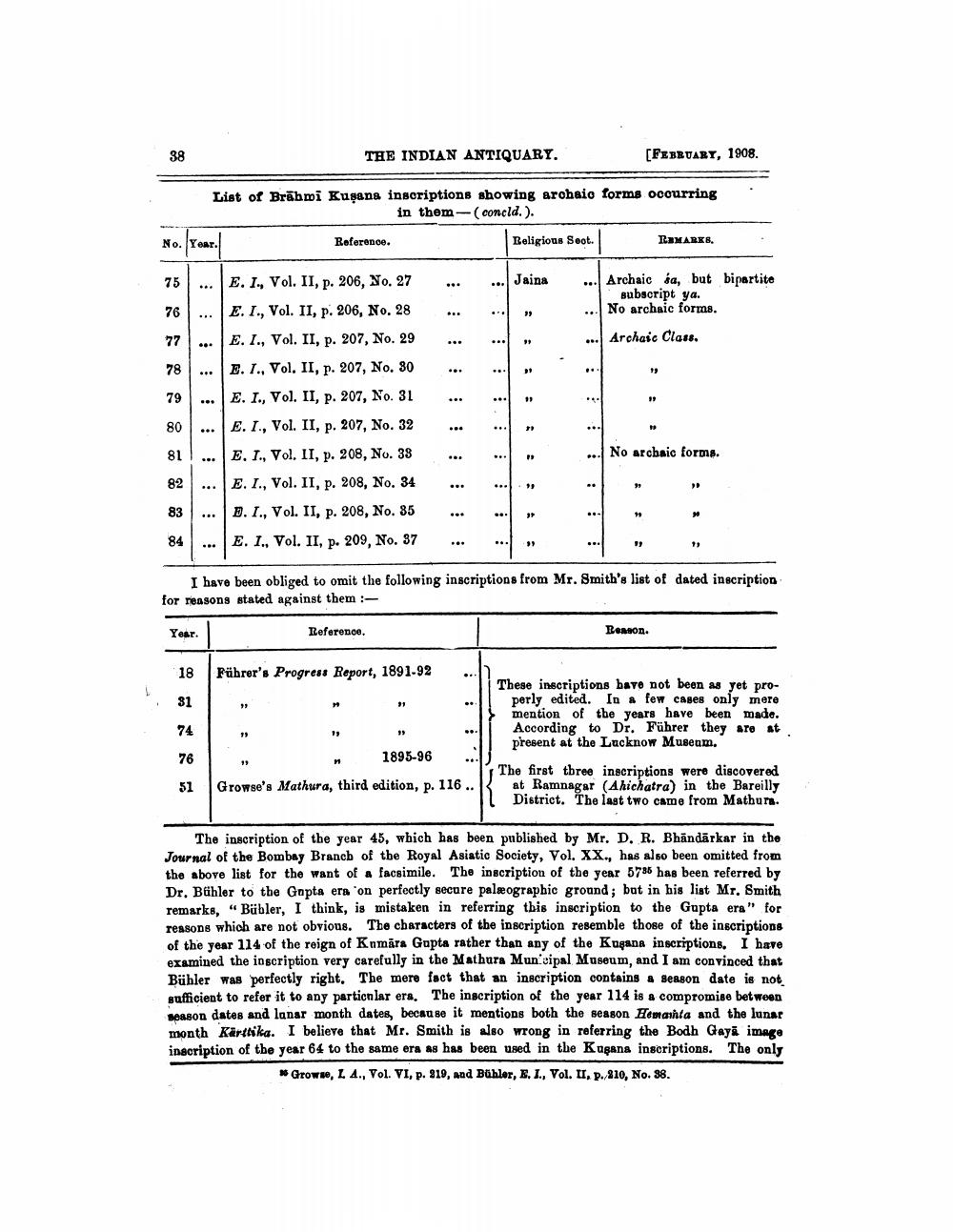________________
38
THE INDIAN ANTIQUARY.
[FEBRUARY, 1908.
List of Brahmi Kuşans inscriptions showing arohaio forms occurring
in them-(concld.).
No. Year!
Reference.
Religious Soot.
TEMARKS.
Jaina
AF
Archaic ba, but bipartite
subscript ya. No archaic forms. Archaic Class,
E.I., Vol. II, p. 206, No. 27 ...E.I., Vol. II, p. 206, No. 28
E. I., Vol. II, p. 207, No. 29 E. 1., Vol. II, p. 207, No. 80 E. I., Vol. II, p. 207, No. 31 E. 1., Vol. II, p. 207, No. 32 E. 1., Vol. II, p. 208, No. 38 E. I., Vol. II, p. 208, No. 34 B. I., Vol. II, p. 208, No. 35 E. 1., Vol. II, p. 209, No. 37
No archaic forms.
I have been obliged to omit the following inscriptions from Mr. Smith's list of dated inscription for reasons stated against them :
Year.
Reference.
Rennon.
...
Führer's Progress Report, 1891-92
Ji These inscriptions bave not been as yet pro
perly edited. In a few cases only mere mention of the years have been made. According to Dr. Führer they are at
present at the Lucknow Museum. 1895-96
The first three inscriptions were discovered Growse's Mathura, third edition, p. 116... at Ramnagar (Ahichatra) in the Bareilly
Il District. The last two came from Mathura.
31
The inscription of the year 45, which has been published by Mr. D. R. Bhändārkar in the Journal of the Bombay Brancb of the Royal Asiatic Society, Vol. XX., has also been omitted from the above list for the want of a facsimile. The inscription of the year 5786 has been referred by Dr. Bühler to the Gapta era 'on perfectly secure palæographic ground; but in his list Mr. Smith remarks, "Bübler, I think, is mistaken in referring this inscription to the Gupta era" for reasons which are not obvious. The characters of the inscription resemble those of the inscriptions of the year 114 of the reign of Komára Gupta rather than any of the Kugana inscriptions. I have examined the inscription very carefully in the Mathura Municipal Museum, and I am convinced that Bühler was perfectly right. The mere fact that an inscription contains a season date is not sufficient to refer it to any particnlar ers. The inscription of the year 114 is a compromise between Meason dates and lanar month dates, because it mentions both the season Homannta and the lunar month Karthika. I believe that Mr. Smith is also wrong in referring the Bodh Gaya image inscription of the year 64 to the same era as has been used in the Kugana inscriptions. The only
Grow, L 4., Vol. VI. p. 919, and Bühler, E, I, Vol. II, p. 310, No. 38.




